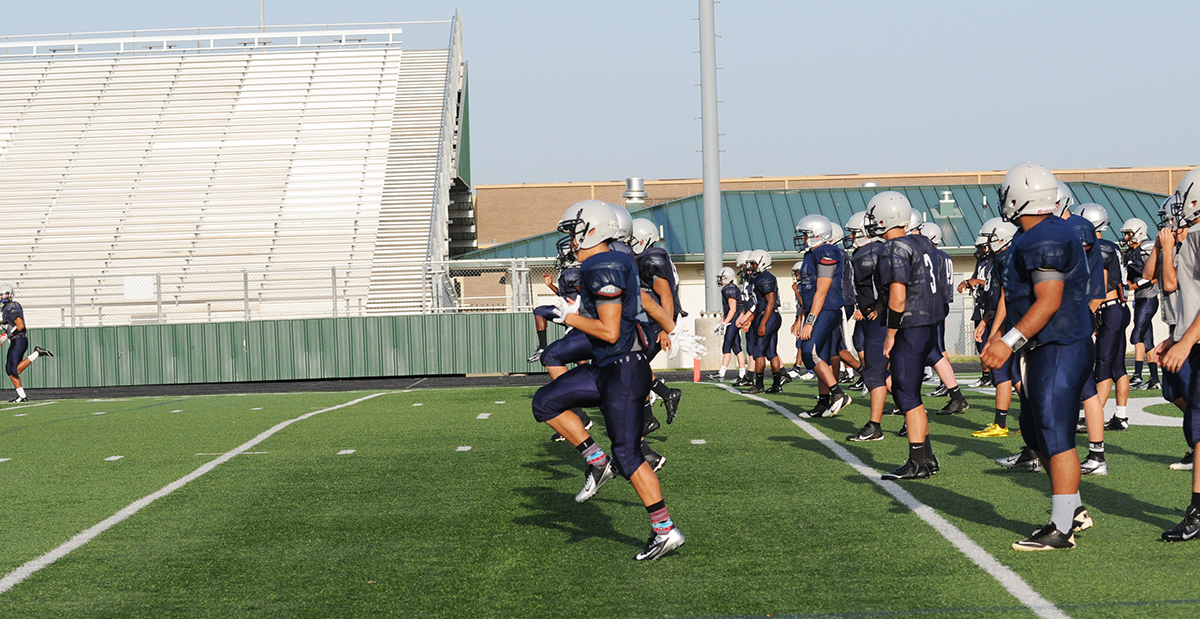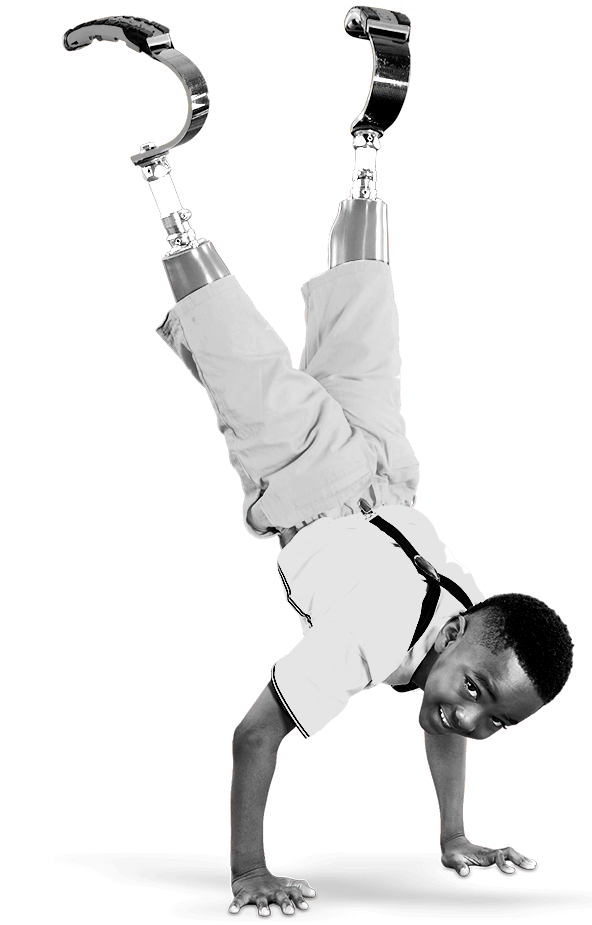
Jul 22, 2020 / Sports Medicine
Playing Safe in Summer Heat
Most healthy young athletes can safely participate in outdoor sports and other physical activities in the heat when they are adequately acclimatized and hydrated. However, it is important to learn the signs and symptoms of heat illness so they can monitor themselves. Adults, including coaches, parents, athletic trainers and physical education teachers, must be able to recognize these signs too, but they also need to modify activities like practices and training to prevent heat illness from occurring.
With social distancing and other changes in training, young athletes may not have an athletic trainer nearby as they train alone or on virtual platforms. Self-monitoring and preventive measures are more important now. We spoke with pediatric sports medicine physician Shane M. Miller, M.D., about the signs of heat illness in young athletes, and what adults can do to prevent heat illness from happening.
Who is responsible for preventing heat-related emergencies?
Everyone. But I think league administrators and coaches have a responsibility to be educated on risks and prevention, and should have protocols in place for acclimatization, activity modification, heat illness recognition and treatment. Now that kids are training more on their own, it shifts some responsibility to parents and the athletes themselves.
What are some signs of heat illness in young athletes that adults and kids need to watch out for?
Heat illness symptoms include headache, nausea and light-headedness, decreased exercise performance, muscle cramps, feeling hot, tired, dizzy or weak. More serious heat illness, referred to as exertional heat stroke, can cause confusion, disorientation, fainting or collapse and is a life-threatening emergency.
What steps can young athletes take to help avoid heat illness?
The most important advice I have is to allow athletes to progress through a period of heat acclimatization over a 10-14 day period, which helps the body gradually adjust to exercising in the heat. Additionally, the athlete should be well-hydrated before practice or games. Taking rest and water breaks in the shade every 15-20 minutes is important for staying hydrated. During these breaks, protective equipment like helmets should be removed to reduce heat retention. Training in direct sunlight and during the hottest hours, 10 a.m. - 5 p.m., should be avoided when possible. Also, young athletes should never participate when they are sick or recovering from an illness, or if they have a fever.
Will you implement new techniques as a team physician?
We utilize wet bulb globe temperature (WBGT) and modify practices based on current conditions. WBGT is a measurement used to estimate the level of heat stress in direct sunlight. WBGT factors temperature, humidity, wind speed, sun angle and cloud cover to produce the most precise temperature readings allowing young athletes to work out more safely and effectively in high-temperature environments. It is more accurate than just using temperature or heat index because it also factors in radiant heat (for example, from the hot turf field that has been baking in the sun all day).
Are you more concerned this year than in years past due to COVID-19?
Yes, sports medicine physicians and athletic trainers are on heightened alert this year. Heat illness risk is increased when beginning a new sport or training program and the body hasn't had a chance to acclimatize. This risk may be increased this year due to COVID-19, as athletes have had prolonged periods of inactivity or stay-at-home restrictions. There may be less time to ramp up before beginning competitions, so coaches may be pushing harder, or perhaps having longer practices. Additionally, in the past, coaches could schedule practices during cooler parts of the day, but now they may not have as much flexibility due to restrictions like group size and limited access to shared facilities.
How does an athletic trainer in the school setting or on the sidelines at sporting events improve the safety of young athletes when it comes to heat?
I am a huge proponent of athletic trainers and would encourage parents to push for having them on the sidelines when their young athlete is playing sports. They are involved in every aspect of keeping young athletes safe. This includes emergency planning, development of heat protocols, monitoring conditions, communicating those with coaches and making appropriate modifications to practice schedules. They ensure access to resources such as an ice water tub and shaded areas for breaks. They are able to recognize heat illness and exertional heat stroke and can initiate rapid cooling/treatment. Also, they understand the importance of cooling first and then transporting, which is an area where many emergency response teams still need further education.
What is the most important message you have for young athletes as they get back to training and practice?
Allowing a two week heat acclimatization period, and modifying practice based on the heat won't cost your team the championship, but it may save a life.
Miller is involved in initiatives to make improvements in the recognition and response to heat illness and exertional heat stroke as well as concussions. His professional memberships include the American Academy of Pediatrics’ Council on Sports Medicine and Fitness, the American Medical Society for Sports Medicine and the Texas Pediatric Society Committee on Adolescence and Sports Medicine. He is also a founding member of the Pediatric Research in Sports Medicine Society.
With social distancing and other changes in training, young athletes may not have an athletic trainer nearby as they train alone or on virtual platforms. Self-monitoring and preventive measures are more important now. We spoke with pediatric sports medicine physician Shane M. Miller, M.D., about the signs of heat illness in young athletes, and what adults can do to prevent heat illness from happening.
Who is responsible for preventing heat-related emergencies?
Everyone. But I think league administrators and coaches have a responsibility to be educated on risks and prevention, and should have protocols in place for acclimatization, activity modification, heat illness recognition and treatment. Now that kids are training more on their own, it shifts some responsibility to parents and the athletes themselves.
What are some signs of heat illness in young athletes that adults and kids need to watch out for?
Heat illness symptoms include headache, nausea and light-headedness, decreased exercise performance, muscle cramps, feeling hot, tired, dizzy or weak. More serious heat illness, referred to as exertional heat stroke, can cause confusion, disorientation, fainting or collapse and is a life-threatening emergency.
What steps can young athletes take to help avoid heat illness?
The most important advice I have is to allow athletes to progress through a period of heat acclimatization over a 10-14 day period, which helps the body gradually adjust to exercising in the heat. Additionally, the athlete should be well-hydrated before practice or games. Taking rest and water breaks in the shade every 15-20 minutes is important for staying hydrated. During these breaks, protective equipment like helmets should be removed to reduce heat retention. Training in direct sunlight and during the hottest hours, 10 a.m. - 5 p.m., should be avoided when possible. Also, young athletes should never participate when they are sick or recovering from an illness, or if they have a fever.
Will you implement new techniques as a team physician?
We utilize wet bulb globe temperature (WBGT) and modify practices based on current conditions. WBGT is a measurement used to estimate the level of heat stress in direct sunlight. WBGT factors temperature, humidity, wind speed, sun angle and cloud cover to produce the most precise temperature readings allowing young athletes to work out more safely and effectively in high-temperature environments. It is more accurate than just using temperature or heat index because it also factors in radiant heat (for example, from the hot turf field that has been baking in the sun all day).
Are you more concerned this year than in years past due to COVID-19?
Yes, sports medicine physicians and athletic trainers are on heightened alert this year. Heat illness risk is increased when beginning a new sport or training program and the body hasn't had a chance to acclimatize. This risk may be increased this year due to COVID-19, as athletes have had prolonged periods of inactivity or stay-at-home restrictions. There may be less time to ramp up before beginning competitions, so coaches may be pushing harder, or perhaps having longer practices. Additionally, in the past, coaches could schedule practices during cooler parts of the day, but now they may not have as much flexibility due to restrictions like group size and limited access to shared facilities.
How does an athletic trainer in the school setting or on the sidelines at sporting events improve the safety of young athletes when it comes to heat?
I am a huge proponent of athletic trainers and would encourage parents to push for having them on the sidelines when their young athlete is playing sports. They are involved in every aspect of keeping young athletes safe. This includes emergency planning, development of heat protocols, monitoring conditions, communicating those with coaches and making appropriate modifications to practice schedules. They ensure access to resources such as an ice water tub and shaded areas for breaks. They are able to recognize heat illness and exertional heat stroke and can initiate rapid cooling/treatment. Also, they understand the importance of cooling first and then transporting, which is an area where many emergency response teams still need further education.
What is the most important message you have for young athletes as they get back to training and practice?
Allowing a two week heat acclimatization period, and modifying practice based on the heat won't cost your team the championship, but it may save a life.
Miller is involved in initiatives to make improvements in the recognition and response to heat illness and exertional heat stroke as well as concussions. His professional memberships include the American Academy of Pediatrics’ Council on Sports Medicine and Fitness, the American Medical Society for Sports Medicine and the Texas Pediatric Society Committee on Adolescence and Sports Medicine. He is also a founding member of the Pediatric Research in Sports Medicine Society.



